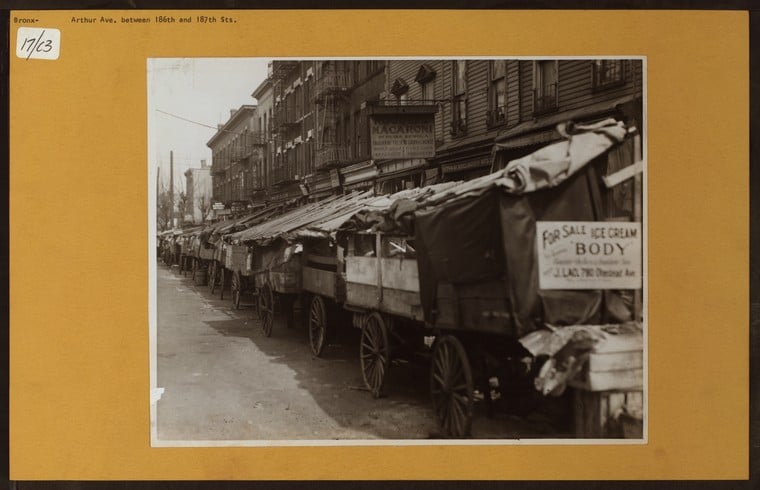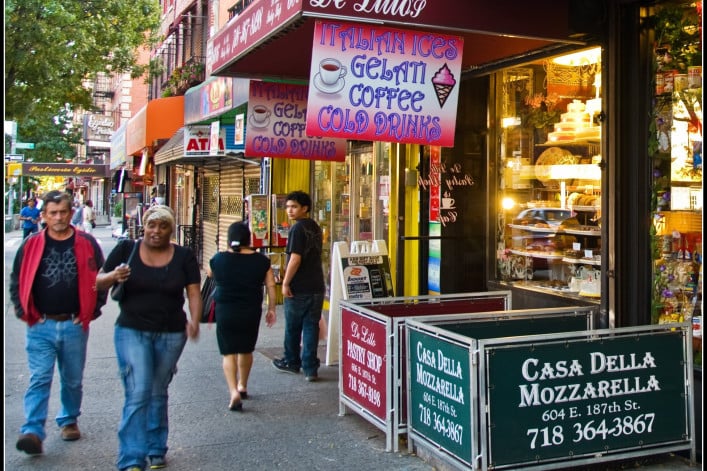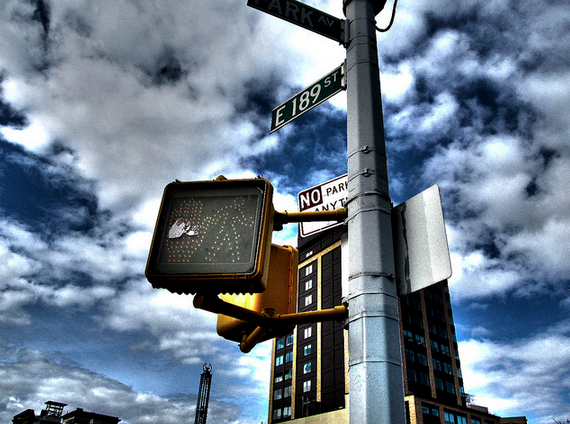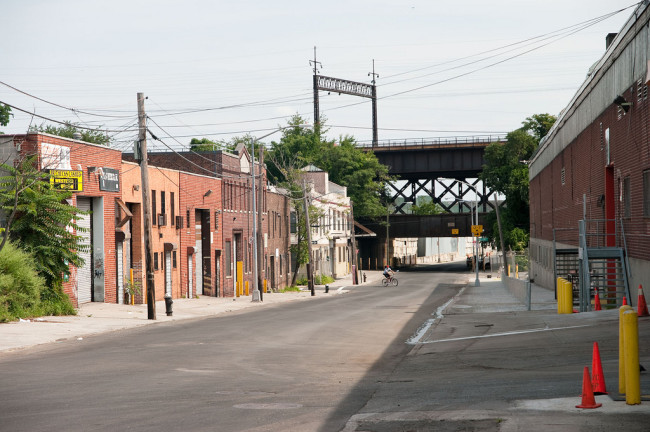The history of Arthur Avenue, one of America's "greatest streets"
New Yorkers know that while Manhattan's Little Italy has all but vanished, the city still has a thriving center for all things Italian-American in the Bronx's Arthur Avenue. And now the thoroughfare, located in the central Bronx neighborhood of Belmont, has been designated one of the "Great Streets of America," CBS reports.
The street was honored by the American Planning Association, which each year publishes a list of neighborhoods, streets, and public spaces that reflect exemplary planning that has resulted in unique and dynamic communities. For the "Great Streets" category, the APA weighs how a given area is laid out to encourage activity and interaction, reflect local culture and history, and create a memorable and lasting impression in visitors.
In a press release, city councilman Ritchie Torres noted how Arthur Avenue meets all these criteria: "This distinction is an honor that further cements Arthur's Ave indelible contributions and significance to the Bronx and New York City. The street's remarkable history, long-standing businesses, cultural importance and people who have made it great is now receiving the recognition it rightfully deserves."
In addition to its sense of cultural authenticity—and its abundance of mouth-watering, imported goodies from Italy—Arthur Avenue is remarkable for its relative stability in a city where even an 80-year-old institution like the Carnegie Deli isn't safe. Many of the street's businesses have been operated by the same families for decades, like the Madonia Bakery, currently run by the third generation of its owners; the Arthur Avenue retail market was opened in 1940 by Mayor Fiorello LaGuardia.
Arthur Avenue acquired its Italian identity around the turn of the century, during a wave of immigration when 5.3 million Italians arrived in NYC. Many headed to the Bronx, and the borough's Italian-American population continued to boom in the wake of World War I, writes Yes the Bronx, when subway lines were extended there and more residential developments went up. Many took jobs in construction or landscaping, helping to shape Bronx landmarks like the zoo and the New York Botanical Garden.
During the Prohibition era, Irish and Italian immigrants were known for clandestinely keeping their neighbors well-lubricated; later, in the 1930s and 1940s, the Belmont area was famous less for booze smuggling and more for the proliferation of pushcart vendors. In fact, Mayor LaGuardia opened the Arthur Avenue market in order to bring them together under one roof, citing sanitation concerns, according to Place Matters.

Pushcart vendors on Arthur Avenue, via the NYPL Digital Collections
Per the Bronx Historical Society, the demographic makeup of the Bronx shifted again after World War II, when thousands of Puerto Rican and African-American New Yorkers in Manhattan were displaced by slum-clearing and headed north. The population of Belmont, however, remained 50 percent Italian-American throughout the second half of the twentieth century.
Famous Italian-Americans, including author Don DeLillo and actors like Anne Bancroft and Joe Pesci, grew up there; Belmont native Chazz Palmintieri wrote A Bronx Tale based on his experiences in the neighborhood.
The New York Times recently visited Belmont and found that these days, it's a lot more diverse, home to new immigrants from countries like Mexico and Albania, as well as to Fordham University upperclassmen who have found housing in the area. And the article notes that, in fact, many of the owners of Arthur Avenue businesses now live outside the neighborhood.
Neverthless, Italian immigrants have left their mark on the area; the Bronx's Italian influence is being further honored this evening, with an Italian-American celebration hosted by borough president Ruben Diaz at the Bronx Zoo.
You Might Also Like




























